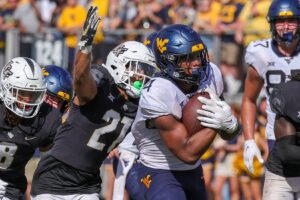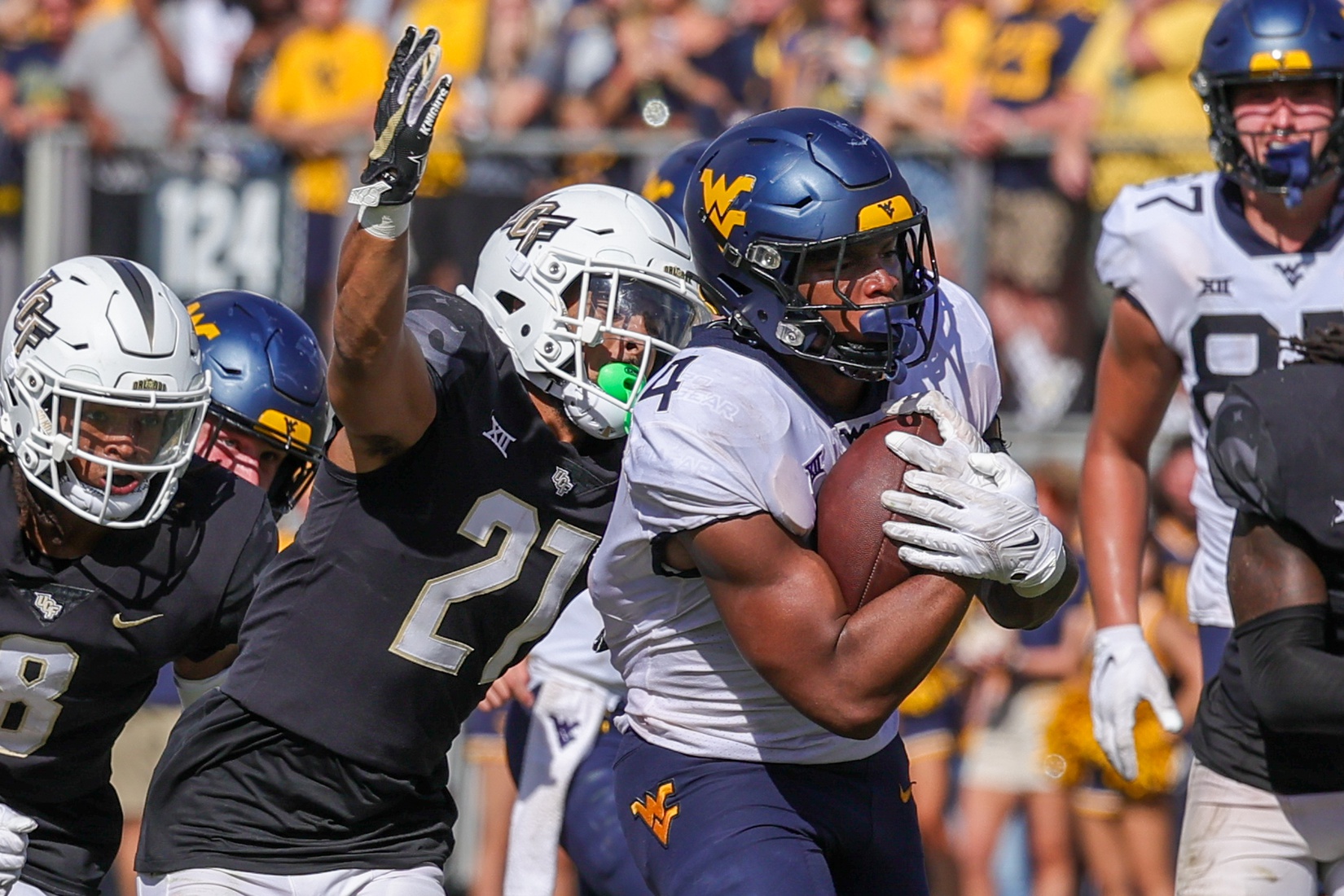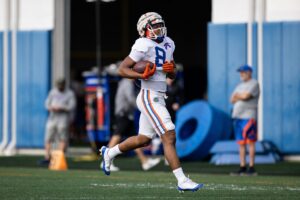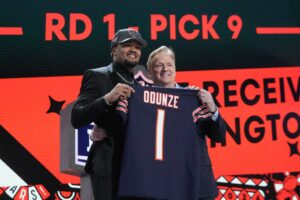Eight games into the season, we wanted to take a look at West Virginia’s tendencies to see if we could pinpoint any trends that help predict their remaining wins and losses. We found a few things, including an anomaly or two. Nonetheless, through two-thirds of the season, we see WVU establishing its offensive identity in pretty much exactly the way Head Coach Neal Brown predicted they would in his first Big 12 media days.
WVU Establishing Its Offensive Identity
By his last year at Troy, Brown had cemented a balanced attack that favored the run. Indeed, in that 2018 season, Brown’s offense at Troy dialed up running plays 57% of the time. In his first Big 12 media days conference, Brown told the media that he sought to attack the Big 12 with a counterpunch to its hybrid air-raid/spread offense passing attacks by running the ball. He sought to establish an offense where he could dial up the pass when needed, but, more important than anything else, he wanted the Mountaineer offense to be able to run the ball even where everyone knew it was coming.
Perhaps it should come as no surprise then, that the Mountaineers feature the most run-heavy offense in the Big 12. Through the first eight games, WVU ran the ball 64% of the time. We cannot say precisely how many of those plays are called runs, as we know that signal caller Garrett Greene has options based on the look given at the line of scrimmage. That said, designed and called runs are certainly prevalent in this offense.
Prior to the Oklahoma State game, we could have said one thing was predictable: if the Mountaineers rushed for 200 yards or more, they were going to win the game. Indeed, they were previously undefeated in those situations. Against the Cowboys, however, West Virginia ran for 226 yards and still lost. Surrendering 282 yards to Ollie Gordon II (with a majority of those coming in the fourth quarter) certainly did not help.
The Magic Sauce?
Looking at trends, however, we see something even more fundamental. Where West Virginia accumulates more rushing yards than passing yards, they win the game. At least, that is how the ball has bounced in 2023.
Of course, we realize their running and passing tendencies can be dictated by game flow. If the defense manages enough turnovers or stops, then Brown and Offensive Coordinator Chad Scott can call the game on offense the way they prefer. As a result, ending the game with more rushing than passing yards is easier said than done. There is a symbiosis between all three phases of the game.
Andrew Wilson-Lamp running into Preston Fox causing a rare muffed punt early in the fourth quarter completely changed the outcome of the Oklahoma State game this year. After jumping ahead 24-20, West Virginia forced a quick punt and could have iced the game after that point. That did not happen, and momentum shifted heavily after that play. We can’t change history, nor do we attempt to here. That said, with the exception of the Duquesne game, in every single game West Virginia has won, they amassed more rushing yards than passing yards. In each of their three losses, on the other hand, the reverse has been true.
Again, it is not as simple as saying to the offense: run better than you pass. Nor is that the barometer. Indeed, West Virginia did not exactly run efficiently in their wins over Pitt and Texas Tech. Against Pitt, they managed just three yards per carry. Against Texas Tech, it was just under four yards per carry. Instead, the barometer is more simple: when they gain more yards on the ground than through the air, they win.
Rotating Production
As expected before the season, the running production comes from several sources. CJ Donaldson leads the team with 574 yards on 133 carries. Greene follows just behind him with 404 yards. Jahiem White trails those two with 270 yards on just 34 carries for a whopping eight yards per carry. Jaylen Anderson and Justin Johnson also contribute 210 yards between the two of them. With plenty of carries to go around, the Mountaineers feed plenty of mouths in the backfield.
They get their receivers involved often enough, too, as they run plenty of side-to-side to keep opposing defenses spread wide. This certainly helps to set up runs between the tackles, as it causes a less crowded box. That said, the offense was built this way on purpose. From the first moment they arrived, Brown and Offensive Line Coach Matt Moore focused almost singularly on building up a veteran offensive line. Fans can consider this mission a success this season.
The Long Ball Still Matters
Over the last three games, the West Virginia offense has opened up even more. Despite losing two of those three, the Mountaineers have proved a point. Where they need to throw the ball, they have a capable quarterback. Picked pre-season as the “worst” starter in all of Power Five, Greene has proven himself anything but the worst. This, too, helps open running lanes, as does Greene’s true dual-threat capability.
Greene, as it turns out, ranks near the top in all categories for passes thrown 20 yards or more. Just as Brown wanted, the Mountaineers have demonstrated an ability to take the top off the defense. That is the required output from a run-heavy offense. Boxes will be stacked; safeties will play shallow looking to support the run defense. At that moment, the offense has to be able to take advantage. Just look at this number. Greene ranks 21st among Power Five quarterbacks with just under eight-and-a-half passing yards per attempt.
Thus, as we see WVU establishing its offensive identity, we cannot help but note that its rushing efficiency has helped its passing numbers, and vice versa. That most of the skills players and offensive linemen have at least another year of eligibility might bode well for the remainder of this season and next. This is critical because we need to be honest here. We know a large percentage (maybe even the majority) of West Virginia fans want to move on from the Neal Brown era. With ongoing budget issues, however, we simply do not see this happening barring an absolute collapse in the final four games. As a result, watching these tendencies unfold and considering how this might look a year from now remains a worthwhile endeavor.







